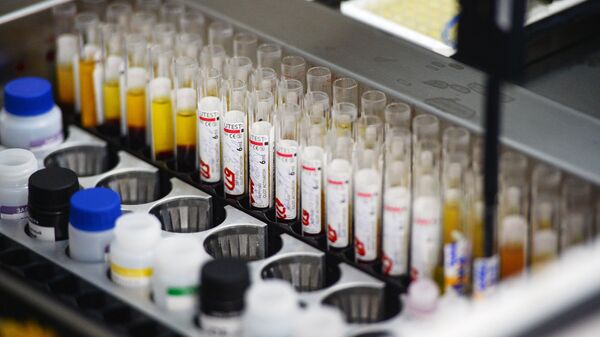Scientists from South Ural State University and the N. D. Zelinsky Institute of Organic Chemistry of the Russian Academy of Sciences, who have been studying polysulphur-nitrogen heterocycles, a type of organic compound, have come to believe the latter boast antiviral properties and may even be used to treat AIDS.
The conclusions came about as a result of joint work with international colleagues – from the University of Zurich, Switzerland, University College London, the UK, North Carolina University, the US, and the University of Eastern Finland. One of the latest studies on the subject was published in the esteemed journal, Bioorganic & Medicinal Chemistry Letters on 15 July.
In 2015, South Ural State University in Chelyabinsk, Russia, collaborated with the Institute of Organic Chemistry to set up a unique laboratory to synthesise original polysulphur-nitrogen heterocycles and search for new compounds with high and diverse biological activity, according to a South Ural University press release.
“We have from the very beginning deemed the study of this class of compounds’ anti-cancer effects as the most promising aspect of research, but it suddenly turned out that these type of compounds may also possess high and selective activity against the feline immunodeficiency virus, which is virtually the closest to HIV”, Professor Oleg Rakitin, Doctor of Sciences in Chemistry, shared.
The latter property of compounds with different heterocyclic structures have been found to be promising in the long-term human fight against AIDs, thereby being of value not only for chemistry, but biology alike.
“The key outcome of our research is the discovery of the general mechanism of how the synthesised polysulphur-nitrogen heterocycles actually work”, Rakitin noted going on to detail the mechanism:
“It presupposes that polysulphur-nitrogen heterocycles with a sulfur-sulfur (or sulfur-selenium) bond can open up within the body with the formation of dithiols, which interact with zinc atoms by almost ‘retrieving them out of’ the viral molecules in the shape of protein-zinc-thiol complexes, thereby deactivating them”, the scientist remarked.
It is notably the first time that such properties of antiviral medication have been determined and flagged, with the team of scientists stumbling upon medicines throughout their research that boast low toxicity for regular cells along with high antiviral activity. The mechanism essentially facilitated the discovery of new classes of heterocyclic polysulphur-nitrogen compounds that may underlie new-gen antiviral medicines, with the possibility of using them to cure a range of viral diseases.
The international team’s research also drew a number of other academic groups – for instance, from the Rio National Institute of Infections (Brazil). Incidentally, Brazilian scientists are currently researching medication against Sporotrichosis, widespread across Brazil.
The research groups are today in search of optimal compounds featuring the maximum therapeutical index for every disease, with the value of the studies consisting in one and the same medication potentially being used to cure various conditions – be it cancer, HIV, which causes the still incurable AIDs, etc.



